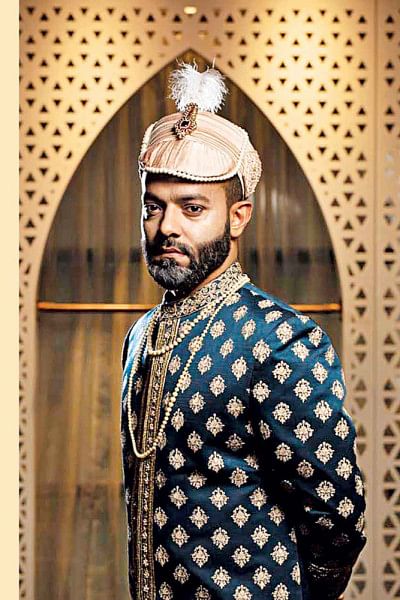The legend of Isa Khan

In love with this soil, Isa Khan built resistance and led his fellow zamindars — collectively known as the Baro Bhuiyan — against any campaigns the Mughals conceived to conquer Bengal in the late 16th century.
Our memory of this distinctive chapter in history — where we see the mighty Emperor Akbar desperately trying, and failing, in his attempts to annex Bengal to the Mughal Empire firmly and permanently — is rather hazy and shrouded with numerous legends.
To illustrate, there has been much talk around the identities of the so-called Baro Bhuiyans themselves. Who were they? Were there literally 12 of them, or were there more?
One may explore and take a walk in the labyrinths of history, trying to find the real Isa Khan amidst the haze around him.
I, on the other hand, make no such attempt to find the man behind the legend. I reckon by now, the man and the monument have become one and the same.
Take for example, his fight with Akbar's distinguished general, Raja Man Singh, who was sent to Bengal to defeat the invincible chieftain.
At one point of the battle, Isa Khan challenged him into single combat, to which the general agreed. The fight reached a climax when Man Singh lost his sword, but Isa Khan, in the spirit of chivalry or sportsmanship, offered him one.
The act sparked in the general an admiration for his enemy in the dramatic and strangest circumstances.
This tale has more than one version and how much truth there is in any of it is something we shall perhaps never know for sure, but the noteworthy aspect here is that the story reflects the fascination Bengalis have about this invincible and fearless hero.
Isa Khan is indeed a subject of fascination and curiosity.
He was once even sold off as a slave, eventually freed by his uncle.
On the other hand, his romance with a widowed daughter of a landlord hailing from a different religion is also a cherished story, and so is her bravery and love, reflected in how, after Isa Khan's demise, she valiantly held the fort against enemies till her death.
A number of ballads have enshrined adventures and marvels of this great hero, painting vivid pictures of valour and glory — arguably exaggerated, but never failing to capture the essence of his larger-than-life persona.
For instance, a ballad mentioned his ship, built in Delhi, which was colossal in size and swift in pace, moved by thousands of hands working on the oars. The ship drew awe and wonder of people everywhere:
"Ek nao Delhir sore korilo nirman
Deshe boideshe jar hoilo bakhan."
The ship's captain hailed from a village on the banks of Padma River.
We also get a vivid picture of Jangalbari, where Isa Khan once settled at. One can imagine the splendour of the city, with large tanks, elegant ghats, flower gardens, etc.
"Challish pura jomire tai jongol katiya
Purikhani bandhe Dewan joton karea
Boro boro dighi katae shane bandha ghat
Bar Banglar ghore lagae shoner kopat...
Chander soman puri abete rangia
Dewangiri kore sobe tothae bosia."
The ballads also give us an idea of the grandeur and pomp of the bungalows of the rich during that era, with feathers and mirrors used for decoration:
"Bhitor anginae mia joto ghor bandhilo
Machua rangar pakha diya chani tate dilo
Aena diya beriache joto ghor khani
Jhilmil kore joto photiker thuni."
And of course, the ballads describe the man himself.
Isa Khan was indeed a patriot who held this land together as the leader of Baro Bhuiyan, but he could be merciless too, like this instance below, where he placed a heavy stone on the chest of a prisoner as punishment:
"Eha to shunia Isa kon kam kore
Pathor chapa diya rakhe badshar nofore."
Isa Khan had many faces. He was a slave and he was a ruler. He was an adventurer and he was a lover. A rebel and a warrior; a landlord as well. Legends arose, passed on as ballads and folklore, blurring the line between history and myth, and thus ironically making the man who is so much talked about, an enigma!
But we indeed know that there once lived an iconic chieftain, who zealously guarded this land, and that the mighty Mughals simply could not take full control of it during his lifetime. It was only after his death that Bengal eventually saw its local rulers get crushed permanently.
Above all else, he is remembered as a benevolent ruler, one who could make enormous sacrifices for his people:
"Tarpore malik ailo Isa Khan Dewan
Jan diya pale porja putrer soman."
By M H Haider
Photo: Sazzad Ibne Sayed
Model: Ahmed Tuhin Reza
Styling: Sonia Yeasmin Isha
Make-up: Sumon
Wardrobe: House of Ahmed
The main sources for the write-up are 'Social Life as Reflected in the Ballad of Isha Khan' by Ferdausi Rahman and 'The Romance of an Eastern Capital' by F B Bradley-Birt.

 For all latest news, follow The Daily Star's Google News channel.
For all latest news, follow The Daily Star's Google News channel. 



Comments